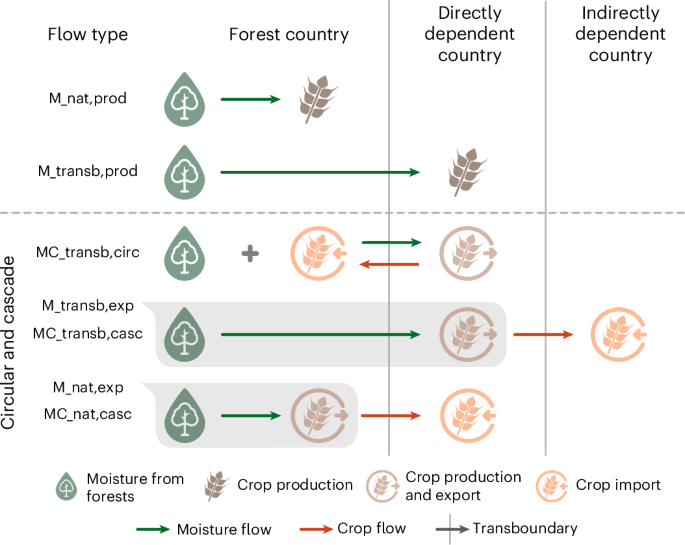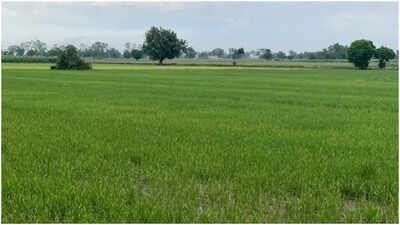University of Virginia Initiative Addresses Food Waste and Insecurity in Alignment with Sustainable Development Goals
Executive Summary
The University of Virginia (UVA) Office for Sustainability has launched a new initiative in partnership with the Free Food Alert application to address the interconnected challenges of food waste and food insecurity on campus. This program directly supports the achievement of several United Nations Sustainable Development Goals (SDGs), most notably SDG 2 (Zero Hunger) and SDG 12 (Responsible Consumption and Production), by creating a streamlined system for redistributing surplus food from university events to students, faculty, and staff.
Program Framework and Operational Mechanics
The initiative leverages a mobile application to connect surplus food with individuals in need, thereby creating a circular solution to waste.
- Event Host Notification: Hosts of campus events with leftover food post details about the available items on the Free Food Alert app.
- Real-Time Alerts: The application sends immediate notifications to a verified user base of over 1,300 individuals with UVA email addresses. Users can also opt-in for email alerts.
- Food Recovery: University community members can promptly collect the available food, preventing it from being discarded and providing them with a meal.
Direct Contributions to Sustainable Development Goals (SDGs)
The partnership is a practical implementation of global sustainability targets at an institutional level, with significant contributions to the following SDGs:
- SDG 2: Zero Hunger: By providing students and staff with access to free, nutritious meals, the program directly combats food insecurity within the university community, ensuring that surplus food nourishes people rather than contributing to landfill.
- SDG 12: Responsible Consumption and Production: The initiative is fundamentally designed to reduce food waste, a key target of SDG 12. By redirecting dozens of meals that would otherwise be discarded, UVA is actively promoting sustainable consumption patterns and minimizing its environmental footprint.
- SDG 17: Partnerships for the Goals: The collaboration between the UVA Office for Sustainability and the Free Food Alert app exemplifies the multi-stakeholder partnerships essential for achieving the SDGs. It combines institutional sustainability objectives with innovative technology to create an effective, scalable solution.
Stakeholder Benefits and Program Impact
According to Lela Garner, UVA Office for Sustainability Manager, the program offers dual benefits that enhance its sustainability impact. Beyond the primary goals of waste reduction and hunger alleviation, it also provides a significant operational advantage.
- For Food Recipients: Provides immediate access to free meals, alleviating financial pressures and food insecurity.
- For Event Hosts: Simplifies the post-event cleanup process by providing an efficient and socially responsible method for managing surplus food.
The program has already facilitated the redistribution of dozens of meals across campus, demonstrating its immediate effectiveness and positive reception by the university community.
Analysis of SDGs, Targets, and Indicators
1. Which SDGs are addressed or connected to the issues highlighted in the article?
The article highlights issues of food waste and hunger within a university community, directly connecting to several Sustainable Development Goals (SDGs). The initiative described involves collaboration and aims to create a more sustainable campus environment.
- SDG 2: Zero Hunger: The primary goal of the initiative is to address “student hunger” by providing access to free meals.
- SDG 12: Responsible Consumption and Production: The program is explicitly designed for “tackling food waste” by redirecting leftover food from campus events.
- SDG 11: Sustainable Cities and Communities: By implementing a system for better waste management (specifically food waste) within the University of Virginia campus, the initiative contributes to making the university community more sustainable.
- SDG 17: Partnerships for the Goals: The article clearly states that the program is a “new partnership” between the University of Virginia’s Office for Sustainability and the Free Food Alert app, demonstrating a collaborative effort to achieve sustainability objectives.
2. What specific targets under those SDGs can be identified based on the article’s content?
Based on the actions and goals described in the article, the following specific SDG targets can be identified:
- Target 2.1: “By 2030, end hunger and ensure access by all people… to safe, nutritious and sufficient food all year round.”
- Explanation: The article states the initiative “connects hungry students and faculty with leftover food” and provides “meals.” This directly addresses the goal of ensuring access to food for those in need within the UVA community.
- Target 12.3: “By 2030, halve per capita global food waste at the retail and consumer levels…”
- Explanation: The program’s core function is to reduce food waste at the consumer level (campus events). The article emphasizes that the app helps event hosts figure out “what to do with lots of leftover food,” thus preventing it from being discarded.
- Target 11.6: “By 2030, reduce the adverse per capita environmental impact of cities, including by paying special attention to… municipal and other waste management.”
- Explanation: The initiative is a form of waste management within the “city” of the university campus. By redirecting leftover food, it reduces the amount of waste that needs to be managed and potentially sent to landfills, thereby lessening the community’s environmental impact.
- Target 17.17: “Encourage and promote effective public, public-private and civil society partnerships…”
- Explanation: The article describes a “new partnership” between a university office (a public/institutional entity) and a technology app (a private or civil society entity). This collaboration is a clear example of the multi-stakeholder partnerships needed to achieve the SDGs.
3. Are there any indicators mentioned or implied in the article that can be used to measure progress towards the identified targets?
Yes, the article mentions or implies several quantitative and qualitative indicators that can be used to measure the program’s success and progress towards the identified targets.
- Indicator for Target 2.1 (End Hunger): Number of meals shared.
- Explanation: The article explicitly states, “The app has already helped with the sharing of dozens of meals across campus.” This metric directly measures the program’s impact on providing food to those who need it.
- Indicator for Target 12.3 (Reduce Food Waste): Amount of food diverted from waste.
- Explanation: While the article doesn’t give a specific weight or volume, the “sharing of dozens of meals” implies a quantifiable amount of food that was successfully redistributed instead of being thrown away. Tracking the quantity of this “leftover food” would be a direct measure of waste reduction.
- Indicator for Target 17.17 (Partnerships): Number of active users.
- Explanation: The article mentions the app sends “real-time alerts to more than 1,300 verified users.” The number of registered and active users is a key indicator of the partnership’s reach and engagement within the university community.
Summary Table of SDGs, Targets, and Indicators
| SDGs | Targets | Indicators |
|---|---|---|
| SDG 2: Zero Hunger | 2.1 End hunger and ensure access to safe, nutritious, and sufficient food. | Number of meals shared with students and faculty (mentioned as “dozens of meals”). |
| SDG 12: Responsible Consumption and Production | 12.3 Halve per capita food waste at the consumer level. | Amount of leftover food from campus events redistributed and diverted from waste. |
| SDG 11: Sustainable Cities and Communities | 11.6 Reduce the adverse per capita environmental impact of cities, including waste management. | Reduction in food waste generated by the university community. |
| SDG 17: Partnerships for the Goals | 17.17 Encourage and promote effective public, public-private, and civil society partnerships. | Number of active users in the partnership’s platform (mentioned as “more than 1,300 verified users”). |
Source: 29news.com







